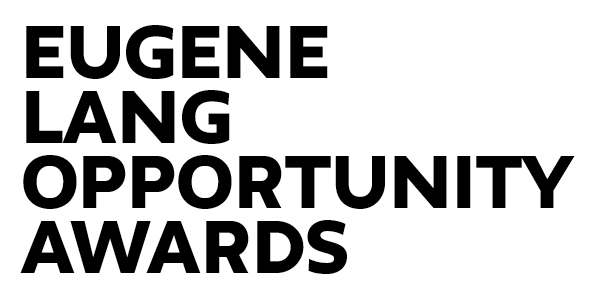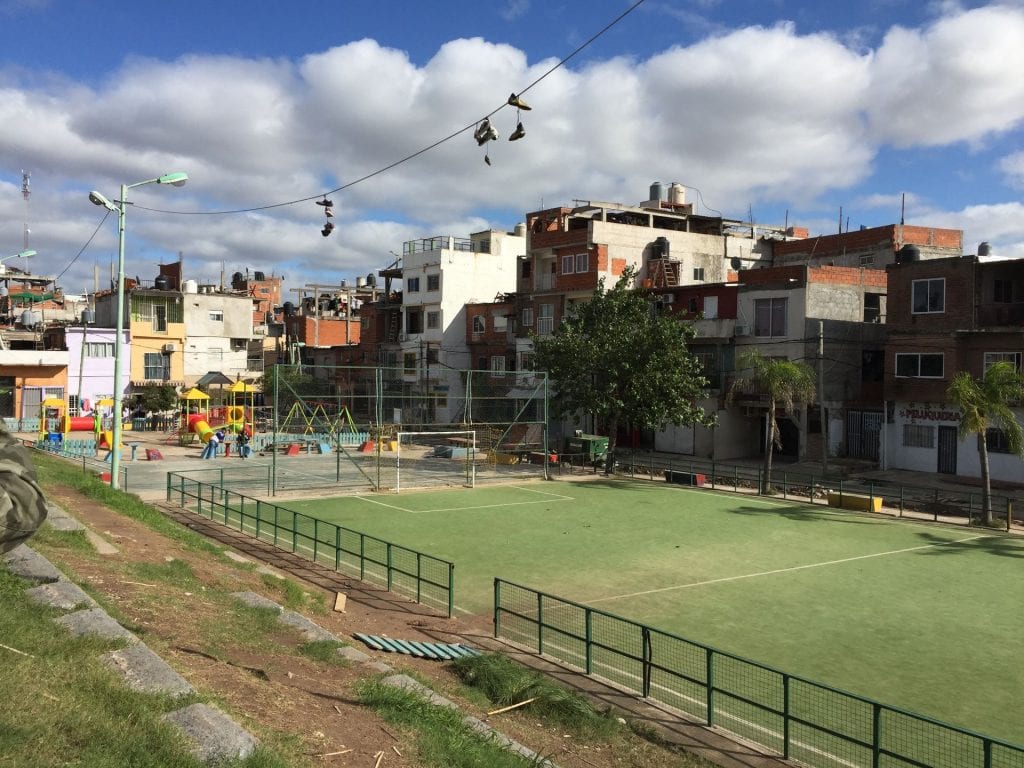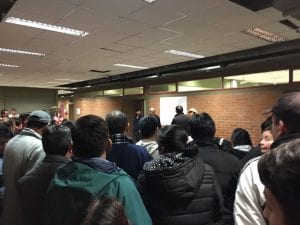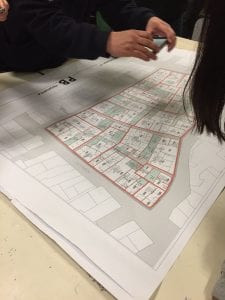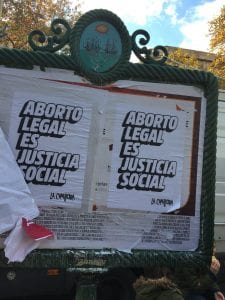This summer, thanks to the Eugene Lang Opportunity Award, I spent two months in Buenos Aires, Argentina doing independent field research through the International Field Program led by the Julien J. Studley Graduate Program in International Affairs. I initially embarked on this adventure in hope of building upon my senior thesis, which explored Argentina’s emerging refugee resettlement program. However, when I met with the community leaders that I interviewed for my thesis, it became clear that the most prominent migration issue in Argentina was occurring at the inter-regional level, primarily concerning Bolivian and Paraguayan immigrants. In order to deepen my understanding of immigration in Argentina, I needed to further understand this regional dynamic.
Through the IFP, I was placed in an internship with the Observatory on Latin America (OLA) where my research focused on the Bolivian migrant community and access to the formal housing market in the city. The research was part of a joint project with the Housing Institute of the City (IVC) aimed at monitoring participatory processes in slum upgrading projects. As part of the qualitative team, I observed weekly community forums in the slum and took notes on the roundtable discussions held with community members. It was really exciting to be working on a consulting project as part of a professional team and in Spanish no less!
My independent research focused on this intersection between migration and urban policy. I asked, what are the institutional and social factors that form the tendency of the concentration of Bolivian migrants in the villas (slums)? How are these factors considered in the current urbanization project being carried out by the housing institute of the city? Do Bolivian migrants have the same access to the benefits of the urbanization project as other residents?
I found that despite a relatively liberal national immigration policy, Bolivian migrants have been and continue to be systematically discriminated against. This discrimination is etched clearly into the spacial cityscape of Buenos Aires, where the horizontal line of the highway divides the wealthy North side from the impoverished South side. Migrants disproportionally populate the city’s villas, which lack formal infrastructure, sanitation, and clean water. This divide is constructed through discrimination in the housing market and labor market, as well as through bureaucratic processes of obtaining correct identification, which is not only slow but also extremely costly. These factors make it all but impossible for regional migrants to obtain housing on the formal housing market, forcing them to resort to the informal market, and in particular, villas.
Given more than 60 years of migration to the South of Buenos Aires, migrant communities within the villas have grown and evolved as a response to these exclusions. They have formed a strong community and transnational networks as well as alternative spaces of residence, commerce, recreation, and services. I argue that the urbanization projects being undertaken by the city government must take into consideration both the barriers that have pushed migrants to the margins of the city in the first place and the emergence of these alternative spaces, as they are likely to shape the eventual success or failure
of the projects.
I came to Buenos Aires at a very exciting time. In addition to my academic and professional experiences, I was able to participate in protests aimed at legalizing abortion and to watch the bill pass through the house. I also watched the Argentine soccer team play in the World Cup from a crowded public park and watched the city prepare for the G20 conference.
Furthermore, I was able to visit some of the cities most interesting cultural sites including: the Centro Cultural Kirchner, a vast museum and civic center founded by former president Cristina Kirchner, the Biblioteca Nacional, a famous brutalist structure and national archive, the Museo de Bellas Artes, home to an incredible collection of Monet, Renoir, Degas, Picasso and many more iconic artists as well as its modern counterpart, the Museo de Arte Latinoamericano (MALBA) which houses, among a large contemporary collection, select Frida Kahlo and Diego Rivera pieces.
Coming into this experience, one of my biggest goals was to immerse myself in Spanish and build my professional vocabulary so that I can utilize the language in my future career endeavors. I challenged myself to use Spanish as often as possible, in both my personal and academic interactions. I completed, presented and submitted my final report in Spanish and carried out interviews with academics, congressional advisors, NGO directors, pastors, community leaders, researchers and government officials entirely in Spanish. The biggest challenge was reaching out to professionals, many of them with high positions within the government or their organizations, and asking for interviews with little or no prior connection. Overall, however, I was surprised by their kindness and willingness to help. Nearly everyone I spoke to was able to direct me toward additional contacts and resources.
In my funding application I wrote that I aimed “to create a research project that does not end abruptly when I return to the United States, but instead prompts deeper questions and contributes to knowledge-building across borders and contexts” as well as to build “international networks and friendships and immerse myself in all that Buenos Aires has to offer.” Looking back on the experience, I can confidently and proudly say that I have achieved these goals. The experience of visiting the villas weekly forced me to reevaluate my understanding of urban inequality, opened my eyes to the complexities of community development and allowed me to glimpse what it looks like in practice. Now that I have returned to the United States, I have begun applying for jobs in my field. Thanks to my experience in Argentina, I have gained a valuable perspective on the realities of community development and real-world experience carrying out research in an international, professional setting. I now feel more equipped to contribute to debates on migration policy and urban inequality in order to ultimately contribute to human-centered policy creation. Perhaps most importantly, I am inspired to continue to ask questions, to learn, and to build understanding.
